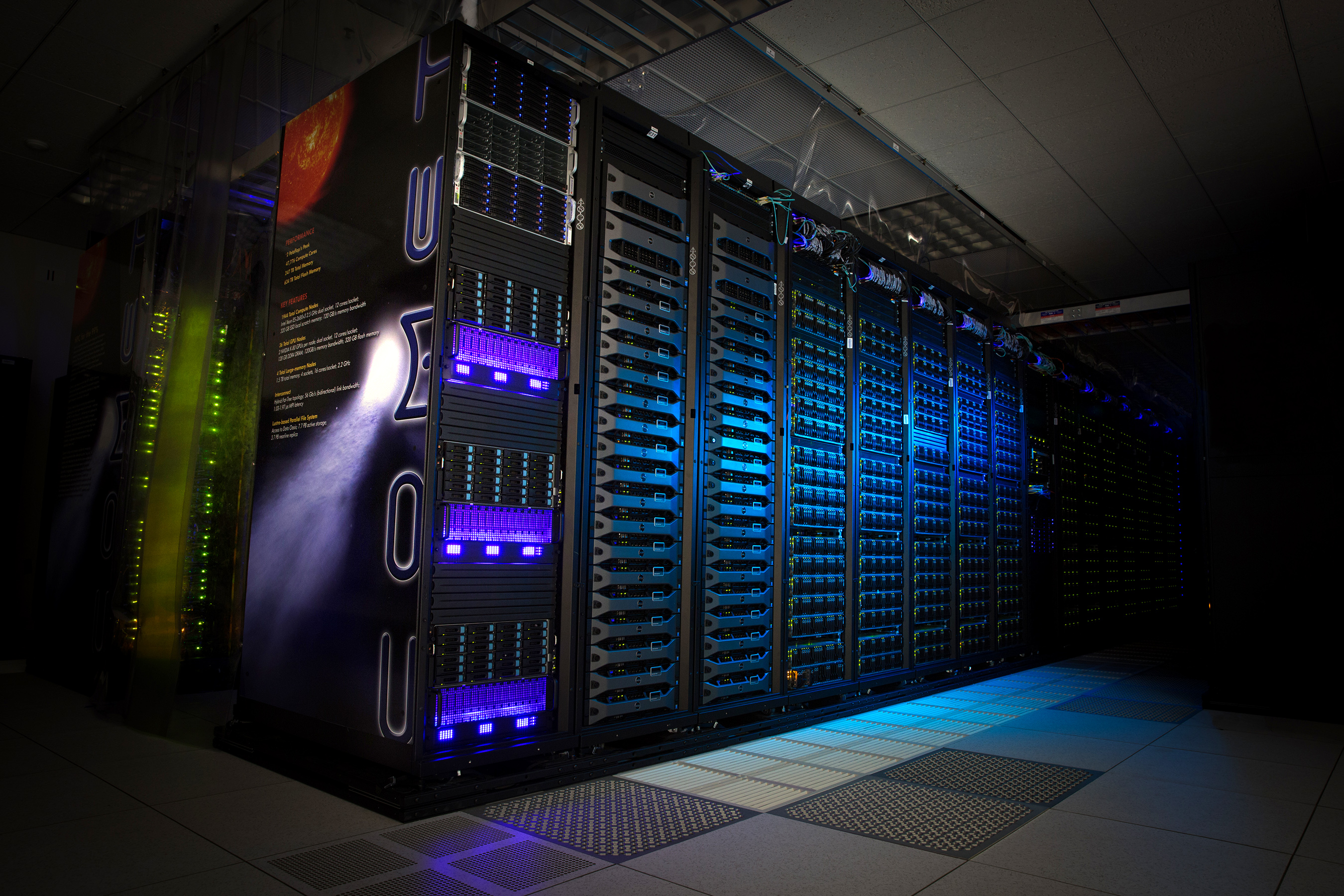Emerging Technologies
CW3E will develop and test data assimilation for individual and coupled systems, with a focus on extreme precipitation associated with West Coast ARs. We will build expertise in AI, ML, and post-processing algorithms to add value to weather prediction tools.
Key Objectives:

Current and future collaborations with San Diego Supercomputer Center will enable new research avenues. Comet, the supercomputer pictured has been the supercomputer that is at the center of this collaboration. Photo credit: Jon Chi Lou, SDSC/UC San Diego.
- Establish CW3E as a leading center for data assimilation tailored to predicting precipitation, ARs, and extreme events in the West.
- Develop revolutionary AI, ML, and post-processing methods to transformatively improve the performance of dynamic models.
Challenges and solutions:
Over the last few years, CW3E has developed state-of-the-science modeling and observation capabilities to predict the formation, evolution, and associated precipitation of ARs. However, landfall forecasts can be off by 300–500 kilometers, even just three days before impact. Several factors limit accurate prediction of the intensity, duration, and landfall location of ARs:
- Finite computational resources allow for only approximate numerical solutions for the known physical processes that shape the evolution of an AR.
- Some physical processes are not well understood and are only partially, if at all, incorporated into current models.
- Current observation capabilities cannot sample the full atmospheric state, especially over the ocean, where data are sparse.
For these reasons, even the most advanced predictions are affected by biases that reduce accuracy. We plan to address these deficiencies by developing our expertise in blending model estimates with observations from the atmosphere, ocean, and land surface—that is, data assimilation. Data assimilation can reduce biases in the initial conditions, which leads to improved predictions. In particular, assimilating better data into coupled earth system models that integrate atmospheric, oceanic, and land-surface processes can help to improve short term forecasting and also extend weather predictions into subseasonal and seasonal scales. With recent advances in AI and ML algorithms, which can be combined with more traditional post-processing methods, CW3E is well-positioned to significantly improve its ability to predict ARs and extreme events.
